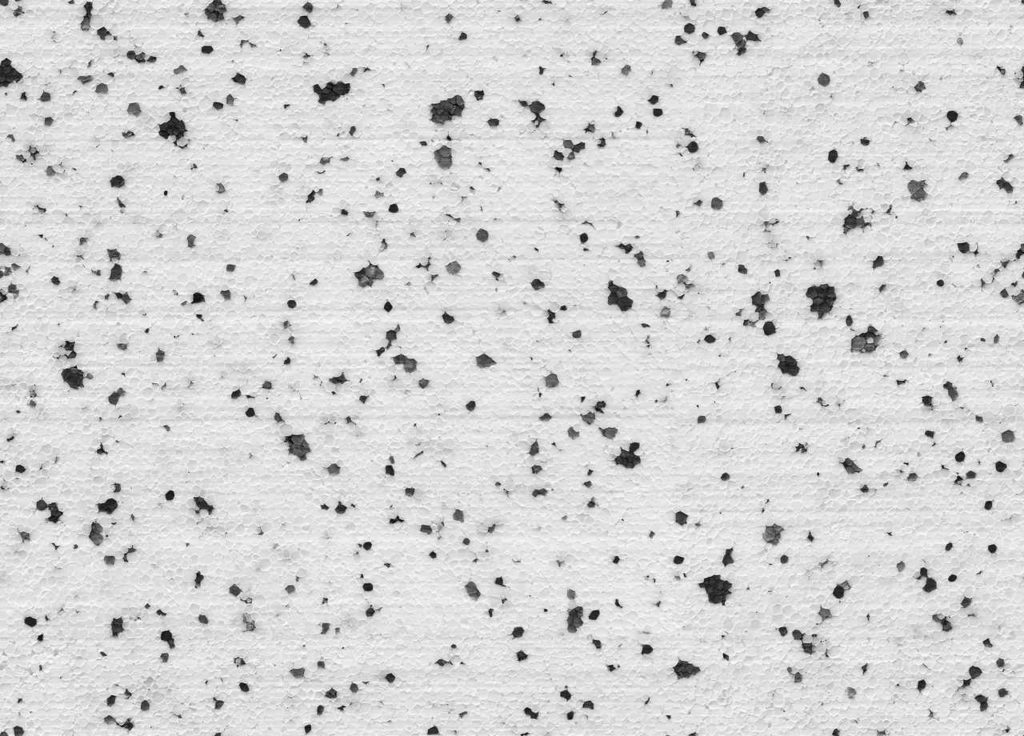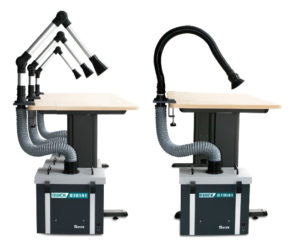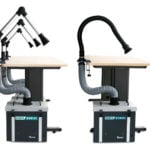Table of Contents
4.2 million
The number of deaths every year as a result of exposure to ambient (outdoor) air pollution
3.8 million
die every year as a result of household exposure to smoke from dirty cook stoves & fuels
91%
of the world’s population lives in places where air quality exceeds WHO guideline limits
What is Particulate Matter?
Particulate matter (PM), also known as particle pollution, is a complex mixture of extremely small particles and liquid droplets that get into the air. Once inhaled, these particles can affect the heart and lungs and cause serious health effects. EPA
What are the Health Effects of Particulate Matter, Fumes, and Pollution?
Carbon emissions, equipment, chemicals, cleaners, paints, and even employees all influence indoor pollution levels. The health effects are often exaggerated and more pronounced in at-risk groups such as those with pre-existing lung or heart disease, as well as elderly people and children.
Air Pollution and Acute Health Effects
Historically, air quality has shown a complex relation to respiratory issues, birth defects, chronic illness, cancer, and even loss of cognitive function. Research suggests air pollution affects everything from neurodevelopment in-utero to cognitive decline in older people. In 2014, the World Health Organization estimated that premature deaths caused by air pollution may exceed 7 million people annually.
Ozone Air Quality Standards
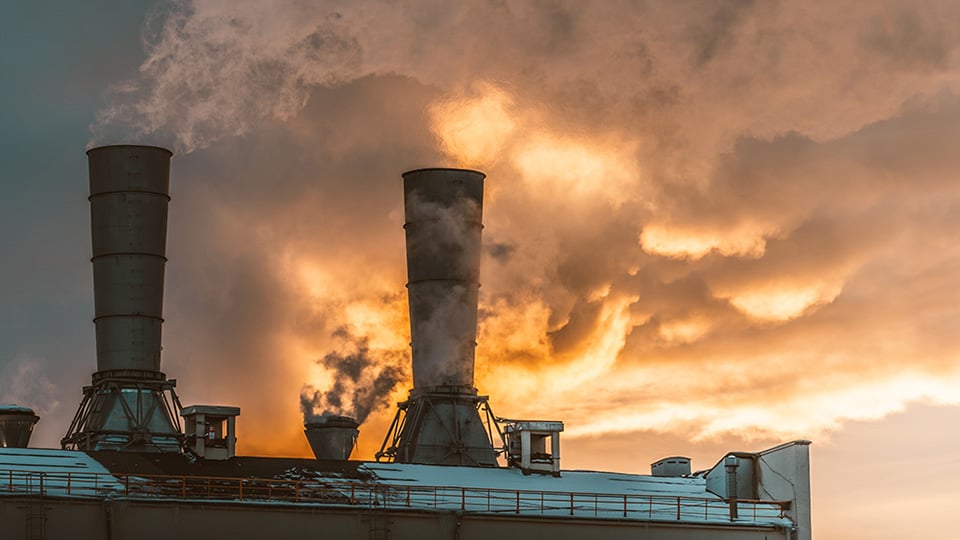
The EPA sets national standards for ambient environment quality by establishing limits for 6 major pollutants considered harmful to the public: ozone, particulate matter, nitrogen oxide, carbon monoxide, sulfur dioxide, and lead.
What Are Ultrafine Particulates?
Particles smaller than 100nm are referred to as ultra-fine particles (UFPs). Because these particles are so small, standard air filters and even HEPA filtration may not be sufficient in capturing and retaining all particles. UFPs become airborne more easily because of their small size. While large particles generally settle quickly, UFPs are able to transverse large areas of space. Greater buoyancy allows airborne suspension for long periods of time, sometimes up to 48 hours.
What are the Particulate Matter Health Effects?
"UFPs are particularly relevant from a health perspective because they deposit efficiently in both the pulmonary and alveolar regions of the lung (Hinds, 1999, Chalupa et al., 2004), as well as in head airways. Deposition in head airways can also lead to translocation to the brain via the olfactory nerve (Oberdörster et al., 2004). The high surface areas associated with UFPs also lead to high concentrations of other adsorbed or condensed compounds (Delfino et al., 2005, Sioutas et al., 2005). Several recent epidemiological studies have shown that elevated UFP number concentrations are associated with adverse health effects, including total and cardio-respiratory mortality (Stölzel et al., 2007), hospital admissions for stroke (Andersen et al., 2010), and asthma symptoms (Peters et al., 1997, Penttinen et al., 2001, Von Klot et al., 2002)." [Source]
Deposition potential for particles of varying sizes
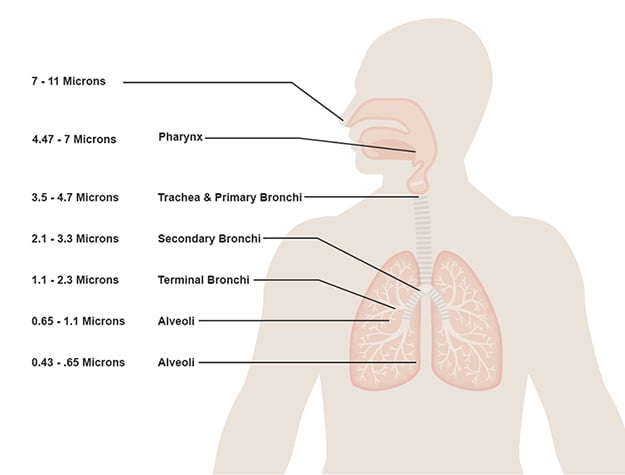
How VOCs Impact Health
Volatile organic compounds (VOCs) emit as gas from some solids and liquids. VOCs generally include many chemicals, some associated with long and short term health effects. Many household and industrial products produce vocs including organic solvents, paints, varnishes, disinfectants, cosmetics, and degreasers. Even seemingly benign items like moth repellents, air freshners, hobby supplies, and building materials include VOC production.
According to the EPA, health effects may include:
- Eye, nose and throat irritation
- Headaches, loss of coordination and nausea
- Damage to liver, kidney and central nervous system
- Some organics can cause cancer in animals, some are suspected or known to cause cancer in humans.
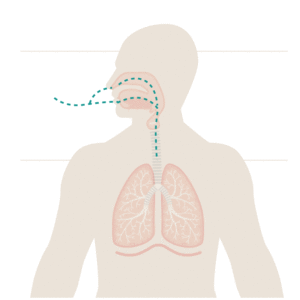
Inhalable

Most Common Particulate & VOC Sources
Dust, powder, sand, and smoke particulates which exceed 10 um are generally large enough to view with the naked eye. There are many human activities which contribute to particulate levels of many sizes as noted by the WHO:
- Fuel combustion from motor vehicles (e.g. cars and heavy duty vehicles)
- Heat and power generation (e.g. oil and coal power plants and boilers)
- Industrial facilities (e.g. manufacturing factories, mines, and oil refineries)
- Municipal and agricultural waste sites and waste incineration/burning
- Residential cooking, heating, and lighting with polluting fuels
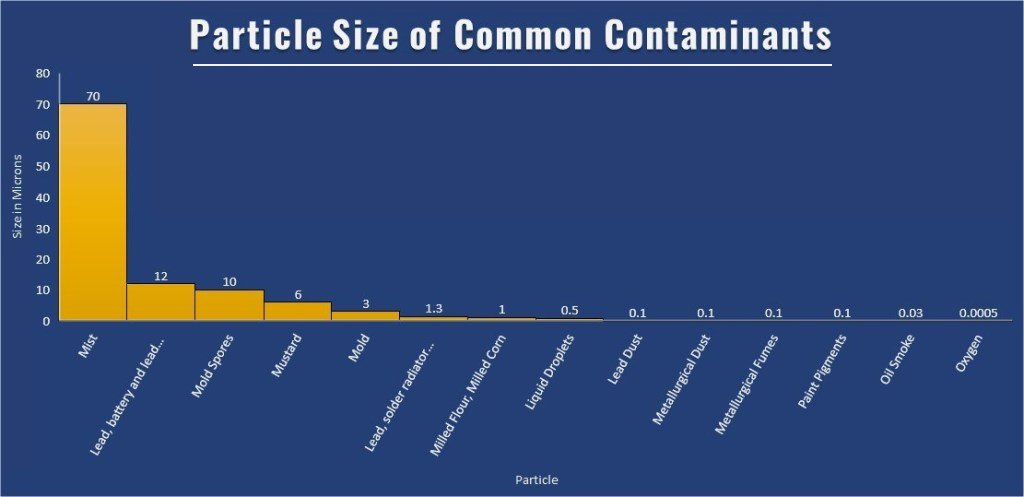
Particulate Size and Characterization (EPA)
Coarse Particle Size:
2.5 - 10 µm
"PM10" | 2,500 - 10,000 nm
- Dust
- Pollen
- Mold
Fine Particles:
<2.5 µm
"PM 2.5" | 100 to 2,500 nm
- Combustion particles
- Organic compounds
- Metals
- SLCP
Ultrafine Particles:
<1.0 µm
"PM 1.0" | 1-100 nm
- 3D printer particles
- Carbonaceous or metallic particles
- Sintering or laser processes
Types of Filters
Advantages of HEPA Filtration
A high efficiency particulate air filter is a precisely designed entanglement of fibers which captures particles as small as 0.3 µm, but may be effective in capturing particles as small as 0.1 µm. The Brownian motion describes the random and erratic nature of the smallest particles. Particles often clump, cluster, and zigzag erratically which increases the probability to impact the filter fibers. HEPA filters extend protection from particles like dust, macro debris, allergens, and remnants from the filament manufacturing process.
Activated Charcoal Filters
Activated carbon filters, also known as activated charcoal are used for purification of gas, water, metal extraction, pharmaceutical manufacturing, and air respirators. Carbon activated charcoal filter capture gaseous chemical compounds such as Formaldehyde, Ozone, Carbon Monoxide, Carbon Dioxide, Sulfur and Nitrous Oxides. Carbon activated designs must consider the balance between air flow rates and the type, depth and surface area of the carbon to ensure suitability for the contaminants and appropriate dwell times.
Pre-Filters
Pre-filter placement before the HEPA filter retains the largest particles before they impact the HEPA filter. Inline, multi-stage filters improve the life span of more expensive HEPA filters by preventing the loss of air pressure under blockage known as “filter load“.
Compare Fume Extractor Prices and Features
Find Fume Extractors and Purifiers Online
Most will benefit from speaking with an applications specialist to ensure proper air velocity and particulate capture. We work directly with manufacturers and stand 100% behind all of our products, which means we’ll also support replacements and warranties in the rare case that a product arrives damaged or defective.
Related Posts
-
Evolving Research and Studies on Particulate Matter, Health & Pollution
The health impacts of polluted air and particulates vary by the form and size of particulate. Learn about different types of particulates and find updated research.
-
3D Printing Fume Extractors for Odors and Particles
Does a HEPA filter capture ultrafine particles (UFPs). What toxins does 3D printing produce? Why should every 3D printer have both a activated carbon and HEPA filter?
-
New: Low Particulate Cleanroom Tape
Premium cleanroom tape and labels are feature non-particulating materials with plastic cores suitable for use in ISO 3 (Class 1) cleanrooms. Each roll and label is cleanroom bagged and packaged in a Class 100 (ISO Class…
-
Why Do I Need Fume Extraction?
There are many applications where fume extraction is necessary and/or required by law. Manufacturing and assembly operations, repair centers, salons, ect. Anywhere where there are harmful fumes and particles in the air that can be…
-
Hakko FA-430 Fume Extraction System
The Hakko FA-430 Fume Extraction unit is expressly for use at soldering stations, extracting the contaminated air directly at the source. Contaminated air is captured from the workplace surrounding the soldering station by the hood…
-
BOFA Fume Extractors for 3D Printing
3D printers are known to produce a number of byproducts during operation. Common 3D printing filaments such as ABS and PLA are known as high emitters of ultra-fine particulates (UFPs), while nylon and PCTPE are…

